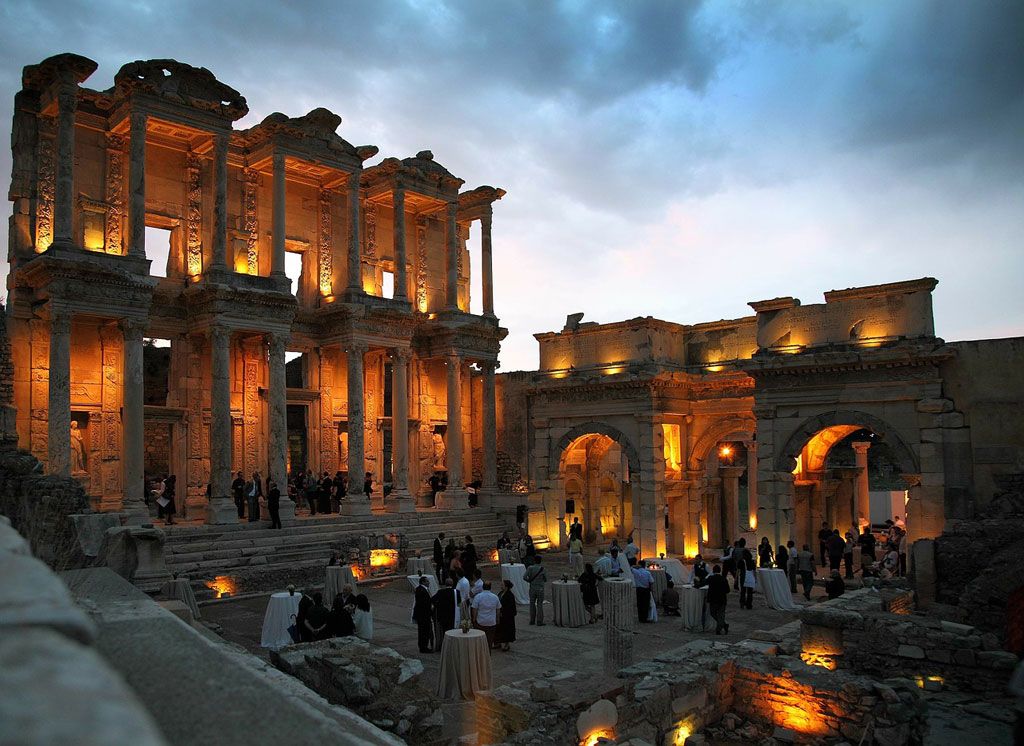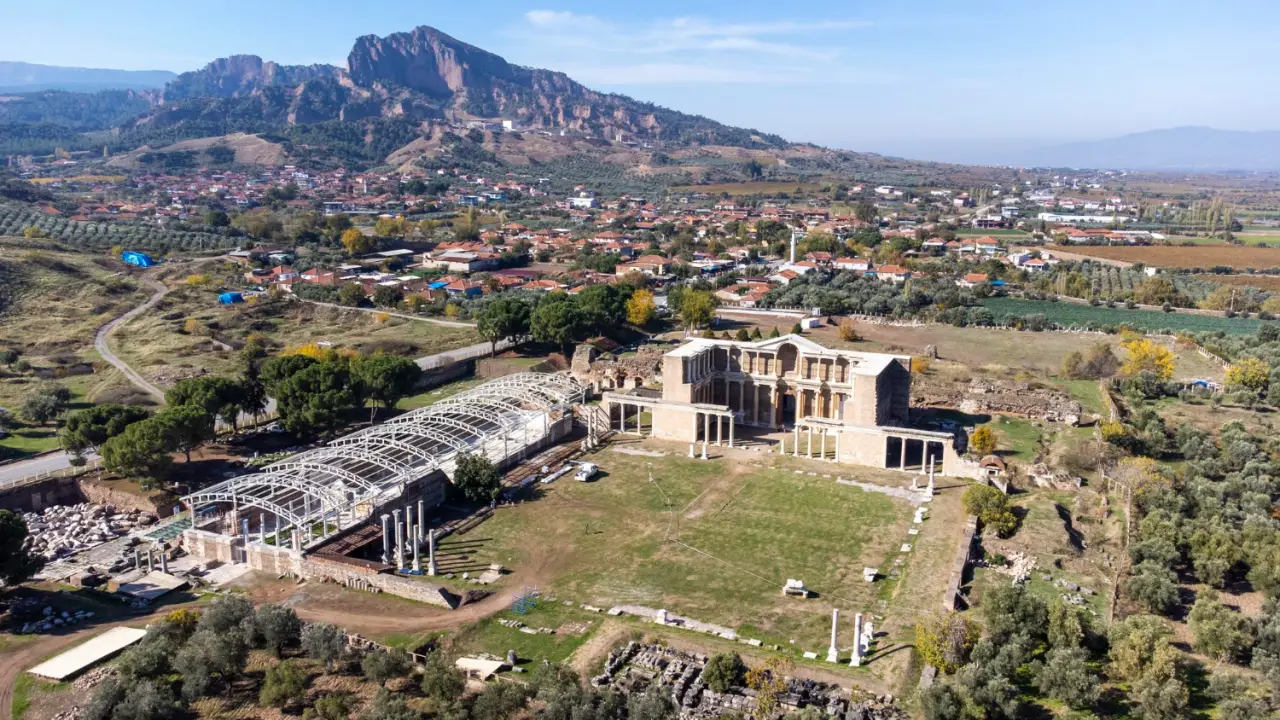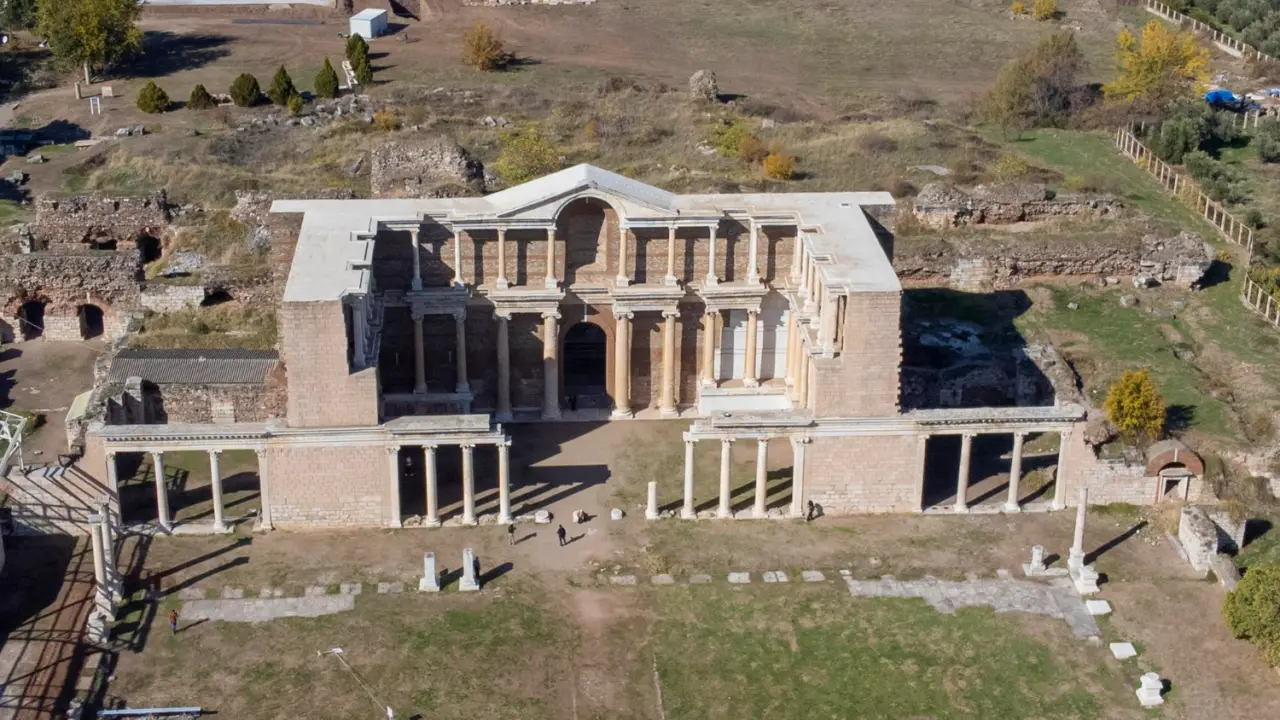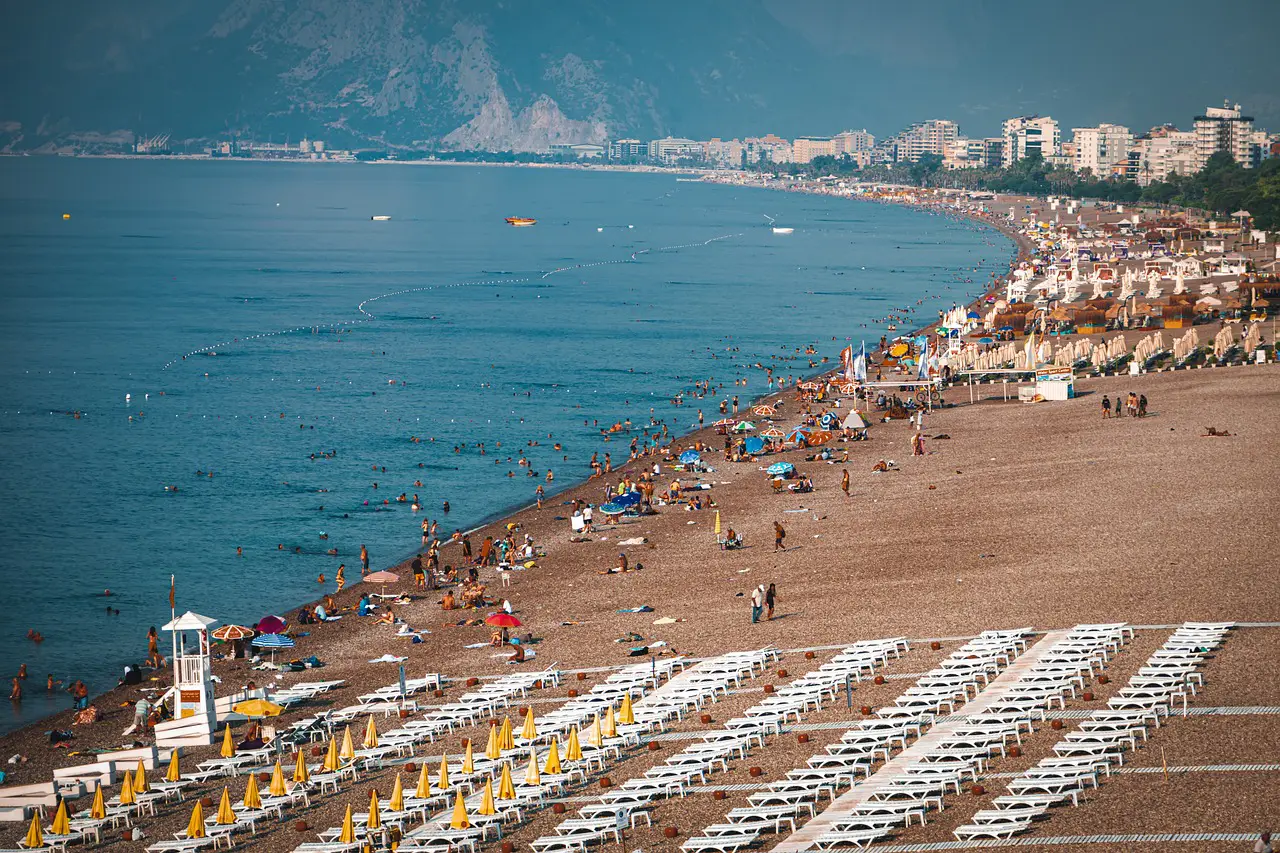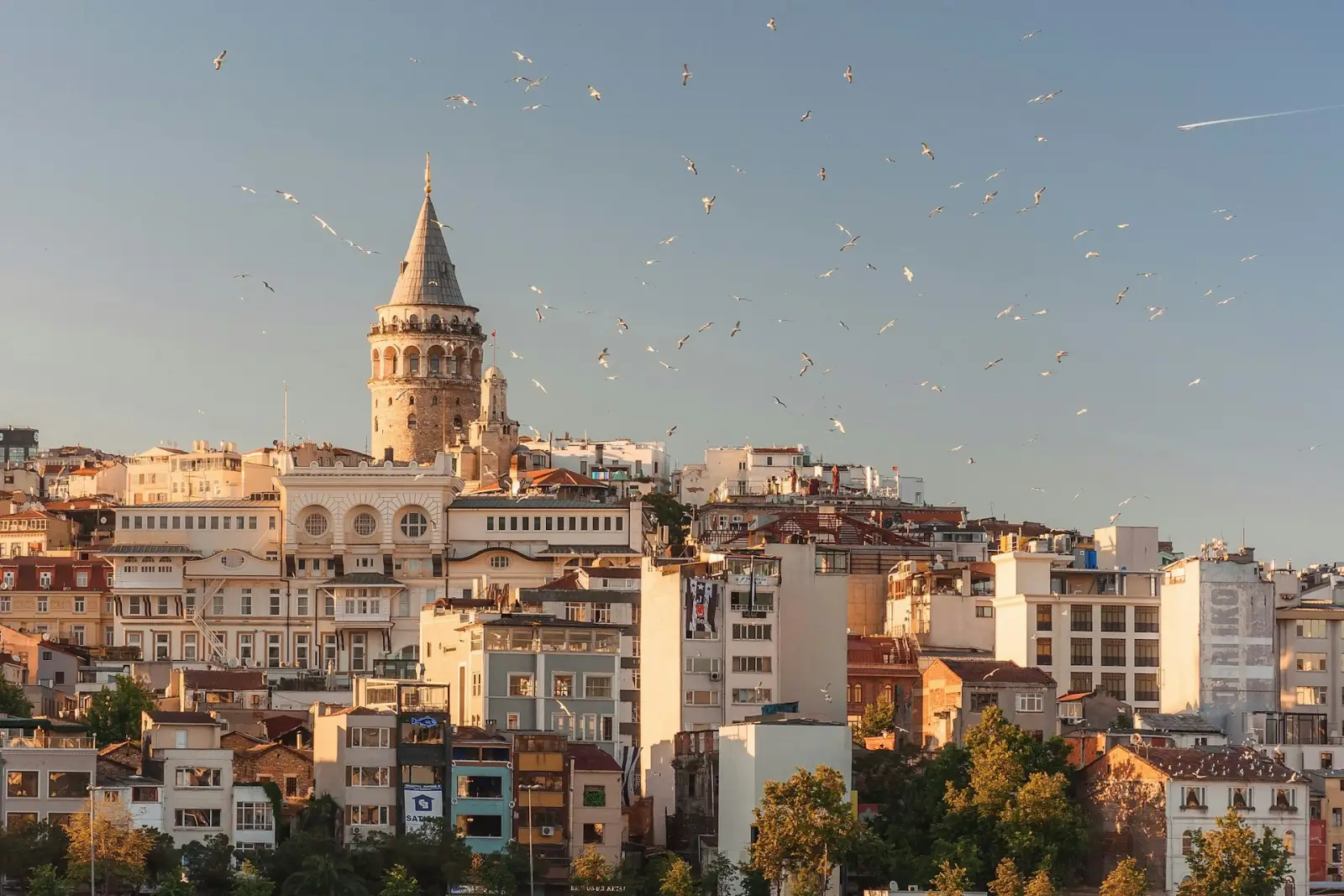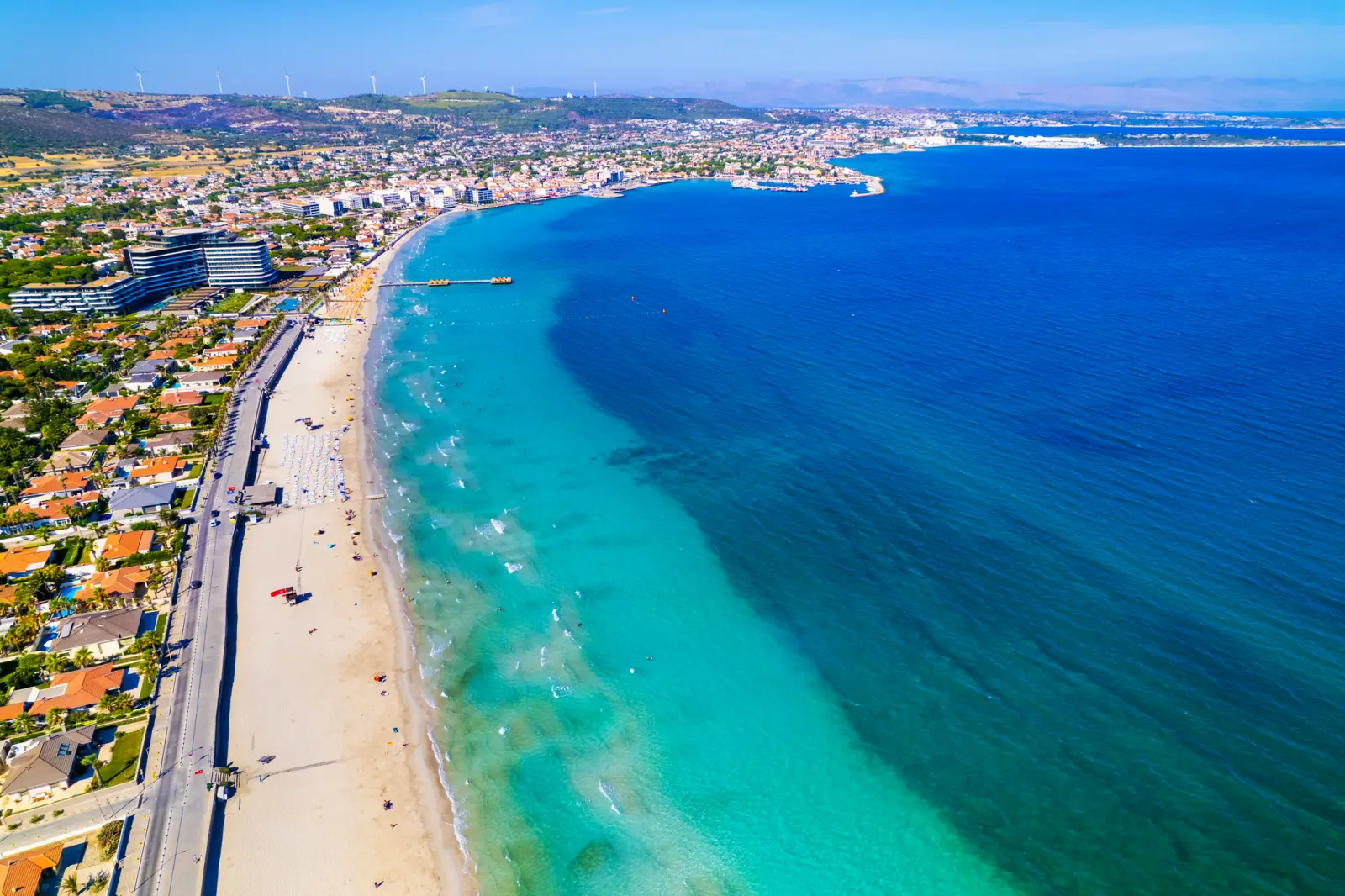Seven Churches of Asia Minor also known as ‘The Seven Churches of Revelation’ and ‘the Seven Churches of the Apocalypse’ are seven major churches of early Christianity, as mentioned in the New Testament Book of Revelation. All of them are located in Asia Minor, present-day Turkey.
Nestled in the heart of modern-day Turkey, these ancient sites offer a unique blend of historical intrigue and contemporary appeal.
Whether you’re a history buff, a cultural explorer, or just completing your bucket list destinations, these locations have something special that you will remember after your visit.
1. Ephesus: The Ancient Metropolis
Ephesus, near the town of Selçuk, is one of the most significant cities in early Christianity. It was home to one of the largest and most influential Christian communities. The Apostle Paul lived and preached here, and the city is mentioned in the Book of Revelation as a major center of the Christian faith.
The city was a key player in East-West trade, and its Mediterranean harbour was one of the most significant for exporting products to the ancient world. The city developed around an ancient shrine of the earth goddess Artemis and later became a key city in the expansion of Christianity, from which St Paul launched many of his missions. The city has a rich history dating back to 6,000 BC, when the earliest settlement in the area was established.
The city was famous in its day for the nearby Temple of Artemis (completed around 550 BC), which has been designated one of the Seven Wonders of the Ancient World. Its many monumental buildings included the Library of Celsus and the Great Theatre that is capable of holding 24,000 spectators.
Ephesus is also the place where the Virgin Mary is believed to have lived after Jesus was crucified. There is a building on the site that is considered the “House of the Virgin Mary,” and this building is a sacred place that Christians visit.
In 2024, the Ancient City of Ephesus, which is on the UNESCO World Heritage List, welcomes its visitors with its renewed lighting within the scope of night museum practice.
The ancient city was illuminated with an LED lighting system within the scope of the application, which aims to enable tourists who prefer beaches during the day due to the high temperatures in the coastal areas, especially in the summer, to visit the museums in the cool hours of the evening.
Within the scope of the practice that started on April 9 in Ephesus, visits can be made until 00:00 with the current entrance tariff.
2. Smyrna: Modern-Day Izmir
Smyrna, now known as Izmir, was another pivotal center for early Christians. It is praised in the Book of Revelation for its faithfulness amidst persecution.
The city’s Agora and Kadifekale (Castle of Izmir) stand as historical testaments to its enduring legacy. Smyrna’s Christians were known for their resilience and commitment to their faith.
The remains of the ancient agora of the city can be seen in Izmir, which is the third largest city in Turkey. When you are in Izmir, you may want to visit the following churches:
St. Polycarp Church
St. Polycarp Church is one of the oldest churches in Izmir, dedicated to Polycarp, the Bishop of Smyrna, who was martyred for his faith. This church stands as a testament to his enduring legacy and offers a serene place for reflection and prayer.
Church of St. John the Evangelist
Located in the heart of Izmir, the Church of St. John the Evangelist is another significant site. It commemorates St. John, who is believed to have had a close connection with the Christian community in Smyrna. The church is known for its beautiful architecture and peaceful ambiance.
St. John’s Cathedral
St. John’s Cathedral, also known as the Anglican Cathedral of St. John the Evangelist, is a historic church that reflects the rich Christian heritage of Izmir. It serves as a hub for the local Christian community and visitors alike, offering regular services and community events.
3. Pergamon: The Acropolis of the Ancient World
Located in modern-day Bergama, Pergamon or Pergamum was an important early Christian community noted in the Book of Revelation. It was recognized for its firm stance against pagan practices despite being surrounded by idolatry. Read on Wikipedia for more about its history.
The magnificent hilltop city of Pergamon dates back to the 5th century BC and was once a hotbed for learning, culture, and invention, flourishing until the 14th century. Remnants of the city’s most important structures remain, such as the Acropolis, the Red Basilica, aqueducts, a major medical center, audaciously steep amphitheatre and a historically important library.
It takes around 1,5 hours to reach Pergamon from Izmir city center. Many Pergamon guided tours pick you up from your hotel in Izmir and take you to Pergamon.
Key sites include the Pergamon Altar, Red Basilica, and Asclepion, which highlight the city’s historical and religious significance.
4. Thyatira: The City of Trade
Thyatira, in the present-day modern Turkish city of Akhisar in Manisa, was known for its trade and commerce. Mentioned in the Book of Revelation, it was praised for its works, love, and faith.
The city’s Christian community thrived amidst a bustling commercial environment. Visitors can explore the ruins and local bazaars, getting a sense of the vibrant life of ancient Thyatira.
The ruins of ancient Thyatira offer a fascinating glimpse into its past. The site includes remnants of a basilica, Roman roads, and various other structures that reflect the city’s importance as a center of trade and early Christian activity. Archaeological excavations continue to reveal more about the city’s layout and history.
One of the Seven Churches mentioned in the Book of Revelation, the Thyatira Church was praised for its love, faith, and service, despite being called to repentance for certain practices. Visiting the site of this early Christian community provides a poignant connection to the messages conveyed in the New Testament.
Wikipedia says, “In early Christian times, Thyateira was home to a significant Christian church, mentioned as one of the seven Churches of the Book of Revelation in the Book of Revelation. According to Revelation, a woman named Jezebel (who called herself a prophetess) taught and seduced the Christians of Thyateira to commit sexual immorality and to eat food sacrificed to idols.”
Though largely in ruins, the Great Church of Thyatira was a significant early Christian site. Its remains highlight the architectural style and religious importance of the period. Exploring this site helps visitors understand the city’s role in the spread of Christianity.
5. Sardis: Wealth and Power
Sardis or Sardes near the Salihli district of Manisa is known as the capital of the Lydian Empire and the place where money was minted under state guarantee for the first time in history.
The letters of St. John criticize the church of the city, where Roman structures have been preserved to this day, for its reputation of weakness in faith and advice to strengthen its faith. The Sardes Archaeological Site, which houses the ruins of a very important center that has not lost its importance even after hundreds of years, deserves to be visited not only for its importance in the history of Christianity, but also for its other cultural values.
Sardis was once a wealthy and powerful city and is mentioned in the Book of Revelation for its spiritual complacency, with a call to wake up and strengthen their faith. The Temple of Artemis, the ancient synagogue, and the grand gymnasium are key sites that reflect its historical and religious significance.
6. Philadelphia: The City of Brotherly Love
Although several ancient cities were named Philadelphia, it is widely accepted that the Philadelphia mentioned among the seven churches in the Book of Revelation is the one in modern-day Alaşehir in Manisa, Turkey.
Listed as the sixth of the seven churches, a letter addressed specifically to the church in Philadelphia can be found in Revelation 3:7–13. The city’s history of earthquakes may explain the reference to making the church “a pillar in the temple.”
Archaeologists have found the city’s theater and the remains of a temple. In the Bible, the church in this city is praised for its faith and patience.
The Church of St. John is also located here. It is one of the city’s ruins and is known for its three well-preserved pillars, making it a very impressive building.
The church is open to visitors from 9.00 in the morning to 17.00 on all days of the week except Sunday.
Entrance is free.
7. Laodicea: The Lukewarm Church
Located near Denizli, Laodicea is noted in the Book of Revelation for its lukewarm faith, receiving a call to repent and rekindle its spiritual fervor.
The city of Laodicea was named after Laodice, a wife in the Seleucid Dynasty, in the 3rd century BC. In many ways, the city mirrored the grandeur of Rome, as it was built on seven hills, just like the ancient capital. Laodicea featured three marble theaters, a vast city wall, and several thriving industries such as banking, clothing manufacturing, and a medical school, all of which are mentioned in Jesus’ rebuke.
The surrounding land was rich and fertile, benefiting from the abundant water flowing through the valley. Archaeologists have uncovered a system of aqueducts that brought water to Laodicea from the south, as the city lacked its own adequate water supply. Unlike Laodicea, the nearby city of Hierapolis had hot springs believed to have medicinal properties, while Colossae, located to the south, boasted cold, drinkable water. The Roman historian Tacitus recorded a major earthquake around 60 AD that destroyed Laodicea. Proud and wealthy, the citizens of Laodicea rebuilt their city using their own resources, refusing any financial aid from Rome.
The city’s archaeological treasures, such as a stadium, baths, temples, a gymnasium, two theaters, and a Senate House (bouleuterion) provide a glimpse into its past. Laodicea’s message is a profound reminder of the importance of spiritual commitment.
Final words
Visiting the ruins of the ancient cities where these churches are located offers a profound journey into the heart of early Christianity. Set entirely in the Aegean Region, this historical tour not only provides deep insights into the origins of the Christian faith but also allows you to walk in the footsteps of the apostles and early believers. Beyond their historical and spiritual significance, these sites are surrounded by breathtaking natural beauty and stunning beaches, making them perfect for a combined spiritual pilgrimage and relaxing vacation.
Imagine standing in the same places where early Christians gathered, prayed, and faced persecution, all while enjoying the picturesque landscapes and serene coastlines of the Aegean. Each church tells a story of faith, resilience, and community, and their ruins speak volumes about the rich history that shaped Christianity.
The 7 churches of Asia Minor are waiting for your visit in Turkey. Come and explore these sacred sites, and let the history and beauty of this remarkable region inspire and rejuvenate your spirit. Whether you’re seeking a deeper connection to your faith or simply looking to experience the wonders of the past, this journey promises to be an unforgettable adventure.
For those interested in extending their spiritual journey, consider exploring more of Christian heritage with our article about Christian tours in Italy. This guide will take you through some of Italy’s most significant religious landmarks, offering another enriching adventure for your travels.


